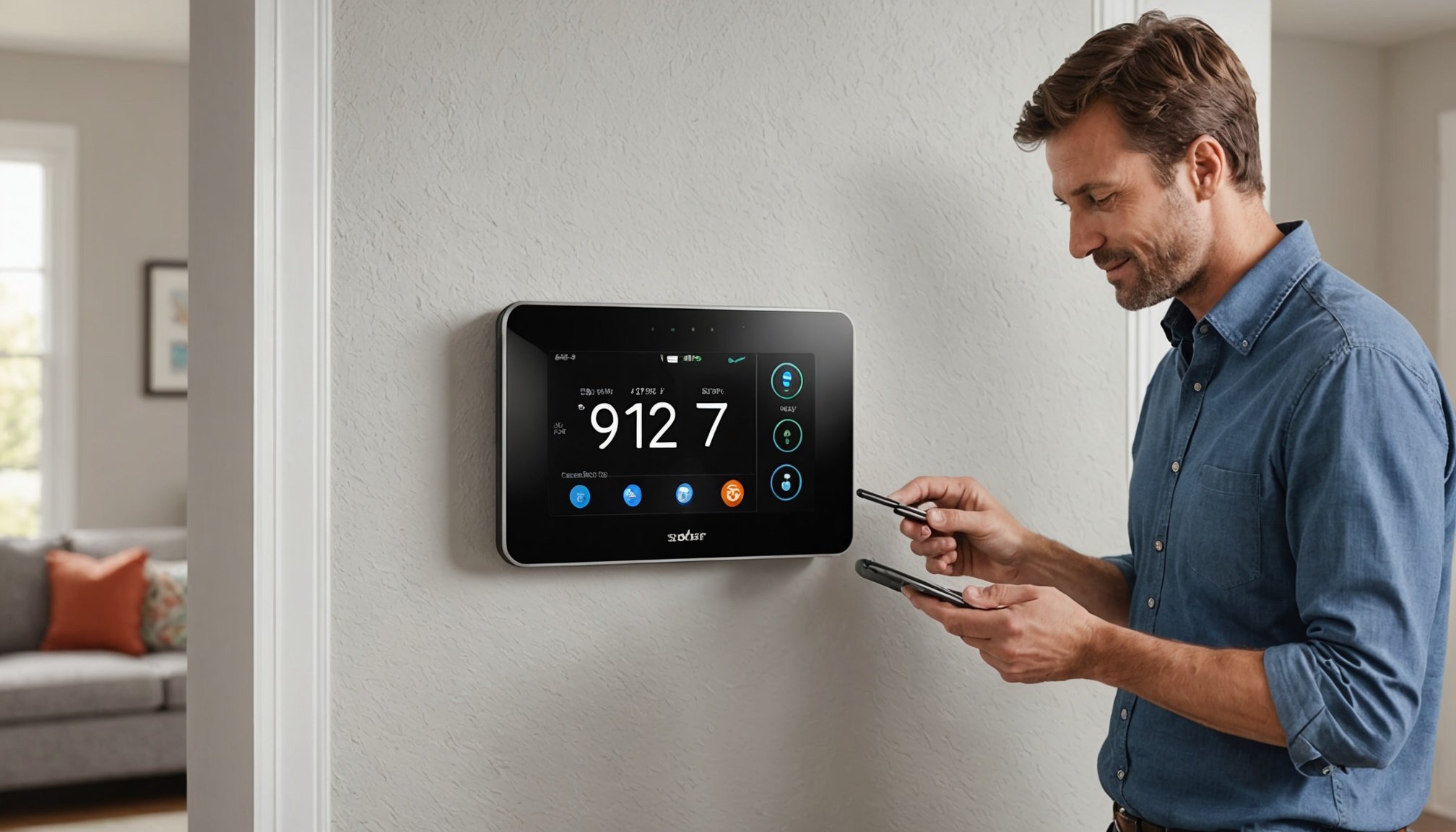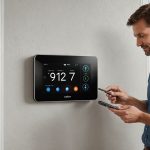Overview of Smart Thermostats
A smart thermostat is a device that enables users to manage their home’s heating and cooling via technology-rich features. Designed to provide comfort and efficiency, these devices have evolved significantly from traditional thermostats. Unlike basic thermostats that require manual adjustments, smart thermostats utilize advanced programming capabilities to enhance usability.
Key Features of Modern Smart Thermostats
Modern smart thermostats boast several remarkable features that cater to a user’s specific needs. Among these are learning algorithms, which automatically adjust heating and cooling based on user habits. Smartphone compatibility provides remote access, allowing adjustments from virtually anywhere. The presence of motion sensors helps in detecting occupancy, ensuring the system runs optimally and improves energy efficiency.
Additional reading : Elevate Your Indoor Air Quality: Seamless Smartphone Control for Smart Home Air Purifiers
Evolution of Thermostat Technology
The evolution from simple, manual thermostats to today’s smart thermostat technology is noteworthy. Initially, thermostats required direct user interaction. With technology advancements, features like Wi-Fi connectivity and compatibility with voice-activated assistants have revolutionized their functionality. This evolution reflects a move towards more intuitive and energy-conscious devices, changing how we engage with our home environments and leading to smarter energy consumption and cost savings.
Benefits of Smartphone-Controlled Thermostats
Smartphone-controlled thermostats offer numerous benefits that enhance both comfort and convenience in managing home environments. These innovative devices provide users with the ability to adjust temperatures remotely, ensuring optimal conditions before even stepping through the door. This remote access helps tackle the modern challenges of time constraints and varying schedules, enabling homeowners to maintain uninterrupted energy efficiency.
In the same genre : Mastering Real-Time Crypto Trading: Your Ultimate Guide to Leveraging Smartphone Technology for Profitable Success
One of the standout smart thermostat benefits is their contribution to energy efficiency and associated cost savings. By learning user habits and adjusting automatically, these thermostats prevent energy wastage, leading to significant reductions in utility bills. Users can set precise schedules and modes, optimizing their heating and cooling systems to operate only when necessary.
The convenience of smartphone control extends beyond daily adjustments. The technology allows homeowners to integrate with existing smart home ecosystems, streamlining the way one communicates with domestic appliances. This seamless integration supports a modern lifestyle, wherein everything is accessible through a single device.
Incorporating smart thermostat benefits into one’s lifestyle not only brings comfort and convenience but also empowers individuals to make environmentally friendly choices, promoting sustainable living practices and reducing carbon footprints with minimal effort.
Comparison of Popular Smart Thermostats
Exploring the landscape of smart thermostat comparisons provides an understanding of how different models meet various user needs. The array of top models highlights the diversity available in the market, catering to preferences regarding features and technology integration.
Top Models in the Market
Several manufacturers lead the market with standout models. Nest Learning Thermostat, Ecobee SmartThermostat, and Honeywell Home T9 exemplify cutting-edge smart thermostat technology. Each model uniquely harnesses innovation to manage home environments efficiently.
Feature Comparison
The emphasis on smart thermostat comparisons lies in their features. Models vary in their compatibility with voice assistants like Alexa or Google Assistant, learning algorithms, and geofencing capabilities. Nest, for example, excels in automatic scheduling through sophisticated learning, while Ecobee is renowned for its room sensors that optimize temperature across larger homes.
Price Range Analysis
A comprehensive smart thermostat comparison also considers prices. While Nest models may slightly exceed Ecobee in cost, the latter often provides a balance between features and affordability. Honeywell typically offers budget-friendly options without compromising essential smart features, making it appealing for cost-conscious consumers seeking efficiency. This diversity ensures that there’s a smart thermostat for every budget and requirement.
Installation Process for Smart Thermostats
Embarking on the smart thermostat installation journey can initially appear daunting. Equipped with the right guidance, however, users find it straightforward and rewarding.
Before starting, gather necessary tools and materials: a screwdriver, drill, level, and appropriate screws. A clear Smart Thermostat Installation Guide is imperative, as manufacturers often provide distinct instructions.
Tools and Materials Needed
The installation relies on a few basic tools:
- Screwdriver: Essential for removing and securing thermostat brackets.
- Drill: Necessary for creating wall anchor points.
- Level: Ensures the thermostat is perfectly aligned.
- Appropriate screws match the mounting requirements of your chosen thermostat model.
Step-by-Step Installation Instructions
- Turn off power at the circuit breaker.
- Remove the old thermostat, noting wire connections.
- Install the new thermostat’s base, pulling through existing wires.
- Connect wires to the respective terminals on the new unit.
- Securely mount the thermostat display.
- Restore power and configure the device as per the Smart Thermostat Installation Guide.
Common Installation Challenges and Solutions
Challenges may include mislabelled wires or uneven walls. A multimeter can verify wire connections, while additional brackets can resolve levelling issues. Following the Smart Thermostat Installation Guide simplifies overcoming these obstacles, ensuring a smooth setup.
Optimizing Your Smart Thermostat Settings
Smart thermostat optimization plays a crucial role in enhancing efficiency and comfort. Adjusting settings for seasonal changes is vital. In winter, increase the set temperature a few degrees to maintain warmth and prevent pipes from freezing. Conversely, in summer, a slight increase in set temperatures can reduce energy consumption without sacrificing comfort.
Harnessing scheduling features maximizes smart thermostat optimization. Programmable schedules ensure that your home is heated or cooled efficiently based on your family’s routine. For instance, reducing heating during unoccupied hours conserves energy. These schedules adapt seamlessly to weekday and weekend routines, offering tailored comfort while saving costs.
Geofencing technology further refines smart thermostat optimization by adjusting settings based on your location. By connecting to your smartphone, the thermostat automatically modifies temperatures upon your arrival or departure. This prevents unnecessary energy usage when no one is home and sets ideal conditions for your return.
To optimize your smart thermostat effectively, regularly review and adjust settings according to lifestyle changes and seasonal demands. Engaging with these features not only enhances comfort but also contributes to substantial energy savings, aligning with both economic and environmental goals.
User Experiences and Testimonials
Exploring smart thermostat user reviews provides insightful feedback on these devices. Users frequently praise how these thermostats significantly enhance home comfort and convenience. Many mention the ease with which they can adjust temperatures remotely, allowing them to arrive home to a perfectly conditioned environment. The energy efficiency and cost savings experienced often exceed initial expectations, making these devices financially beneficial in the long run.
However, not every review is without its challenges. Some users have encountered difficulties with installation, particularly where wiring systems were incompatible. Others faced occasional connectivity issues, usually resolved with minor adjustments or updates. Such feedback highlights the importance of thoroughly examining your home’s compatibility during the buying process and regularly updating the software for optimal performance.
Recommendations from expert reviews generally align with user feedback. Reviewers stress the value of features like learning algorithms and geofencing, underscoring their contribution to effective smart thermostat optimization. Experts also advise potential buyers to consider their specific needs and home configurations, ensuring the chosen device offers the best balance of features and budgetary constraints. This comprehensive feedback from real-world experiences and expert evaluation guides informed decision-making, enhancing future user satisfaction.











